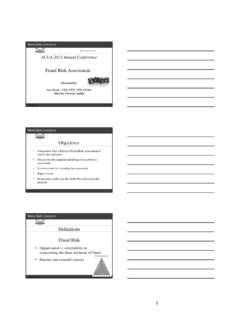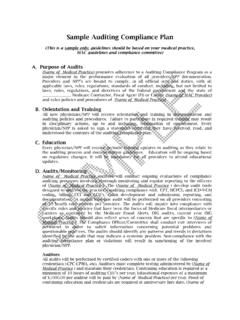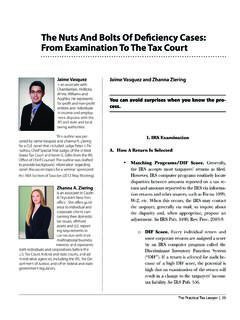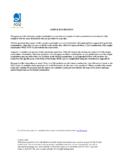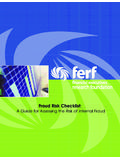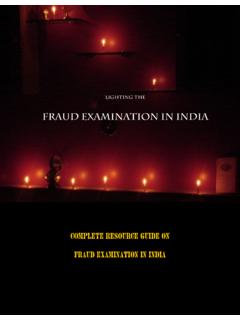Transcription of FRAUD RISK ASSESSEMENT - Information Assurance
1 FRAUD RISK ASSESSEMENT GOVERNANCE, RISK AND CONTROL CONFERENCE 29 August 2014, Lusaka, Zambia Nchimunya Chisuta CFE, FCCA, FZICA Regional Audit Director Southern Africa, World Vision Int. Agenda FRAUD Risk Assessment - Process of Identifying and Analysing risks (Sample FRAUD Risk Assessment tool) - Brief background of what constitutes FRAUD - Share Resources tools to utilise in FRAUD risk management - Common challenges in Effective FRAUD Risk Assessment FRAUD Risk Exposure IMPORTANCE OF THIS SESSION Effective risk assessment is increasingly Important to the success of any business Relationship of FRAUD Risk assessment with enterprise risk management program Training received is a very good basis for implementing an anti- FRAUD programme.
2 A trained leader/staff/Entrepreneur is an important asset The environment and business world we operate requires responsible persons in positions of authority to lead the way with knowledge on FRAUD and set the tone at the top. Examples of current statistics: Awareness on Global Trends Source: Global Corruption Barometer 2013 Key findings from 114,000 respondents in 107 countries: Bribes: Overall, more than one in four people (27%) report having paid a bribe in the last 12 months when interacting with key public institutions and services. The police and the judiciary are seen as the two most bribery prone.
3 An estimated 31 per cent of people who came into contact with the police report having paid a bribe. 27% with Judiciary Governments are not thought to be doing enough to hold the corrupt to account The democratic pillars of societies are viewed as the most corrupt around the world, political parties, the driving force of democracies, are perceived to be the most corrupt institution. Awareness on Global Trends Source: Global Corruption Barometer 2013 Powerful groups rather than the public are judged to be driving government actions. More than one in two people (54 per cent) think their government is largely or entirely run by groups acting in their own interests rather than for the benefit of the citizens.
4 People state they are ready to change this status-quo in the fight against FRAUD . Nearly 9 in 10 surveyed say they would act against corruption 53 per cent of people surveyed think that corruption has increased or increased a lot over the last two years. This was the case in In Algeria, Lebanon, Portugal, Tunisia, Vanuatu and Zimbabwe, where people indicate that corruption has gotten much worse, with three out of four indicating an increase in corruption Awareness on Global Trends ACFE reports that the average total cost of FRAUD in a corporate org. is equivalent to 7% of the annual revenues.
5 Failing to address these issues places an org/company at a competitive disadvantage when FRAUD becomes a cost of doing business FRAUD RISK ASSESSMENT -RESOURCES TO SHARE ( ) FRAUD Control Policy FRAUD Risk Assessment Framework FRAUD Questionnaires FRAUD Surveys FRAUD Assessment Checklist FRAUD Risk Self Assessment Tool NOTE: These appendix are samples . The Information may or may not agree with all the concepts noted within this presentation. The material is being provided as an example that may be a used as a tool, reference, or starting point. FRAUD RISK ASSEMENT What is FRAUD ?
6 Legal Definition: A false representation of a matter of fact, whether by words or by conduct, by false or misleading allegations, or by concealment of what should be disclosed, that deceives and is intended to deceive so that the individual will act upon it to her or his legal injury FRAUD is a type of criminal activity in simple words the abuse of entrusted power for gain . FRAUD , by definition, entails intentional misconduct, designed to evade detection. As such, a FRAUD risk assessment team should engage in strategic reasoning to anticipate the behaviour of a potential FRAUD perpetrator.
7 ** FRAUD falls into these 3 main categories: **Using Game Theory and Strategic Reasoning Concepts to Prevent and Detect FRAUD , Accounting Horizons, Volume 18 Asset Misappropriation Cash Non Cash Corruption Bribery Conflict of Interest Extortion Financial Statement Purpose of Risk Assessment Risk assessment is intended to provide management with a view of events that could impact the achievement of objectives. It is best integrated into existing management processes and should be conducted using a top-down approach that is complemented by a bottom-up assessment process.
8 Boards of directors and particularly board audit committees often request enterprise-wide risk assessments to ensure that key risks are identified and duly addressed. Such risk assessments should not be disconnected from other assessments performed within the organization. The internal audit function, for instance, may be assessing risks to plan its audits for the year. The finance function may look at similar Information to perform its risk-based scoping. Business units may also be assessing risks from a business planning or performance management perspective. These individual assessments should be aligned ( , using common terminology, risk categories, and congruent outcomes), to cover key objectives, and be integrated to contribute to an enterprise-wide risk assessment.
9 Types of Risk Assessments Strategic risk assessment. Evaluation of risks relating to the organization s mission and strategic objectives, typically performed by senior management teams in strategic planning meetings, with varying degrees of formality. Operational risk assessment. Evaluation of the risk of loss (including risks to financial performance and condition) resulting from inadequate or failed internal processes, people, and systems, or from external events. Compliance risk assessment. Evaluation of risk factors relative to the organization s compliance obligations, considering laws and regulations, policies and procedures, ethics and business conduct standards, and contracts, as well as strategic voluntary standards and best practices to which the organization has committed.
10 This assessment is typically performed by the compliance function with input from business areas. Financial statement risk assessment. Evaluation of risks related to a material misstatement of the organization s financial statements through input from various parties such as the controller, internal audit, and operations. Types of Risk Assessments - continued Internal audit risk assessment. Evaluation of risks related to the value drivers of the organization, covering strategic, financial, operational, and compliance objectives. This top-down approach enables the coverage of internal audit activities to be driven by issues that directly impact shareholder and customer value, with clear and explicit linkage to strategic drivers for the organization.
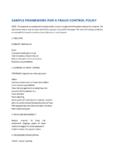
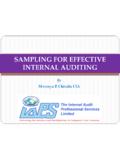
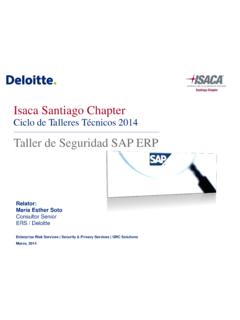
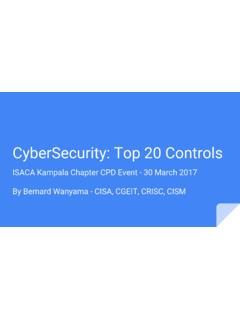
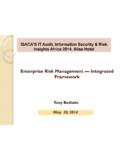


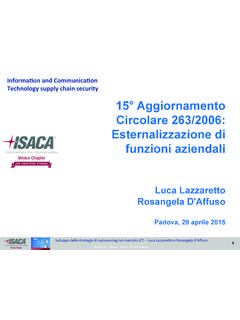
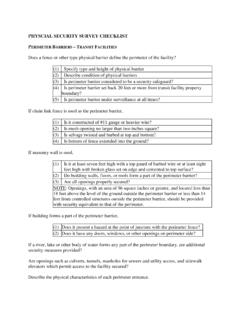


![FRAUD EXAMINATION REPORT [TITLE] CHIEF EXECUTIVE OFFICER ...](/cache/preview/2/8/5/f/7/e/0/9/thumb-285f7e0991a5694a80e59d121b8f3b5a.jpg)
